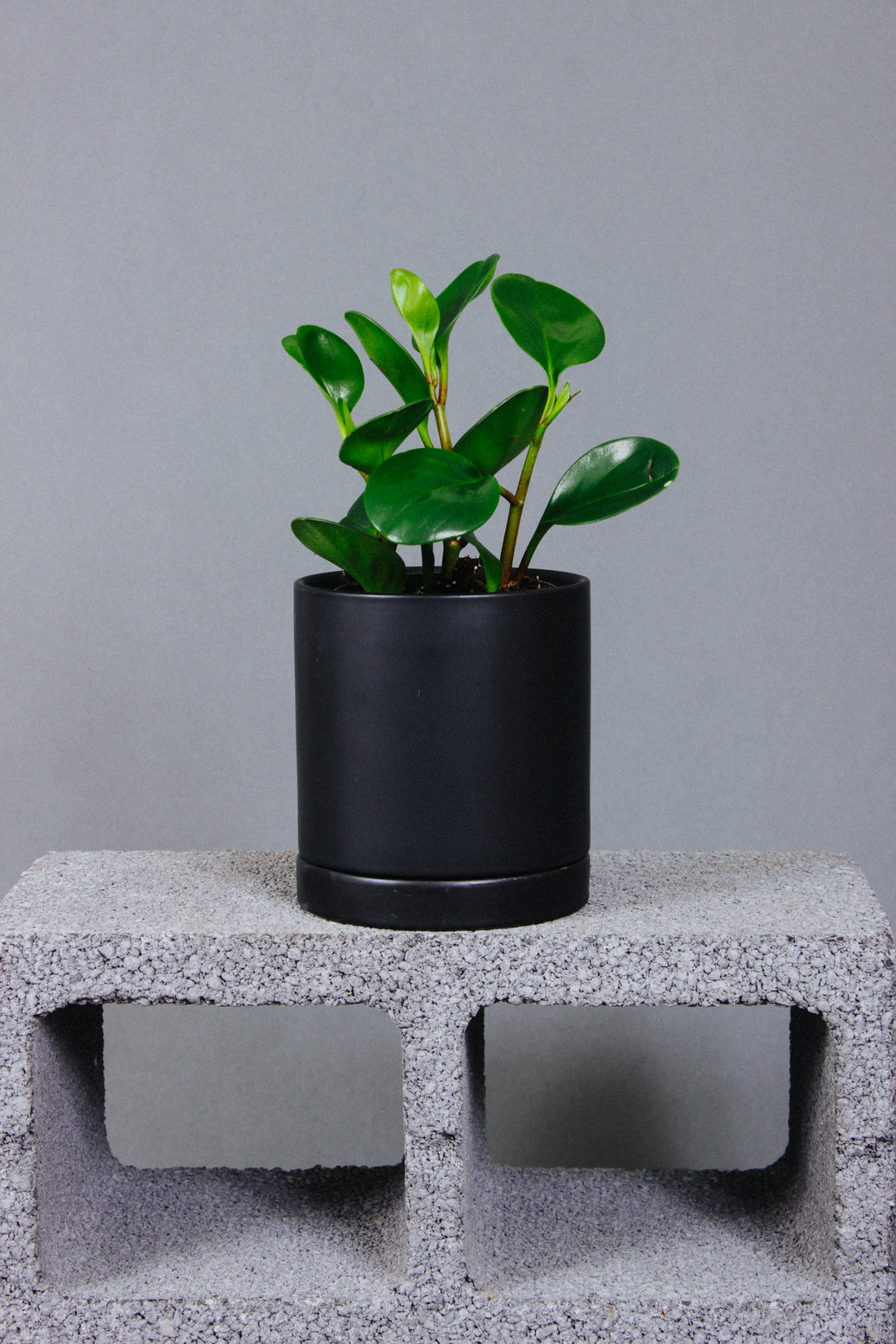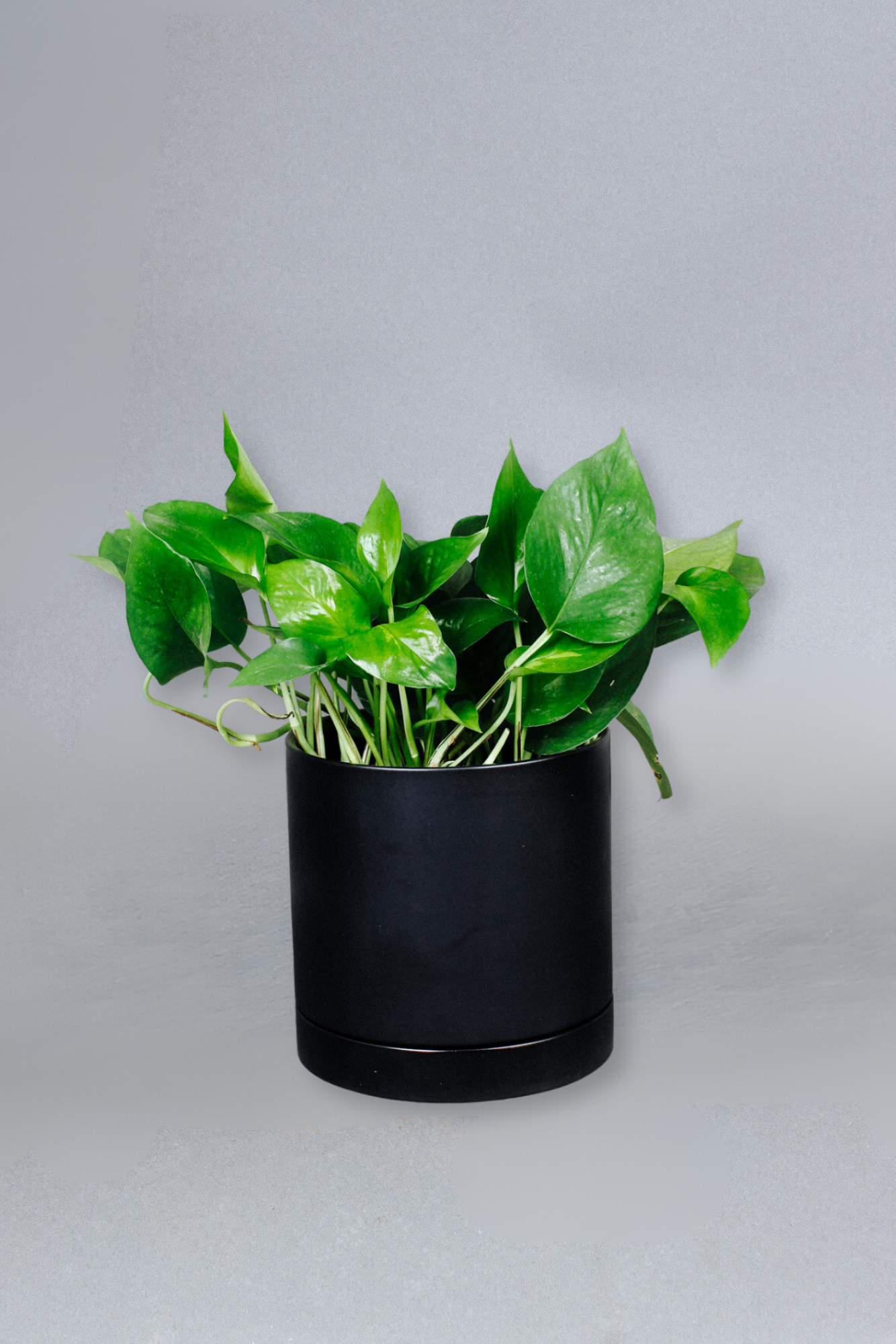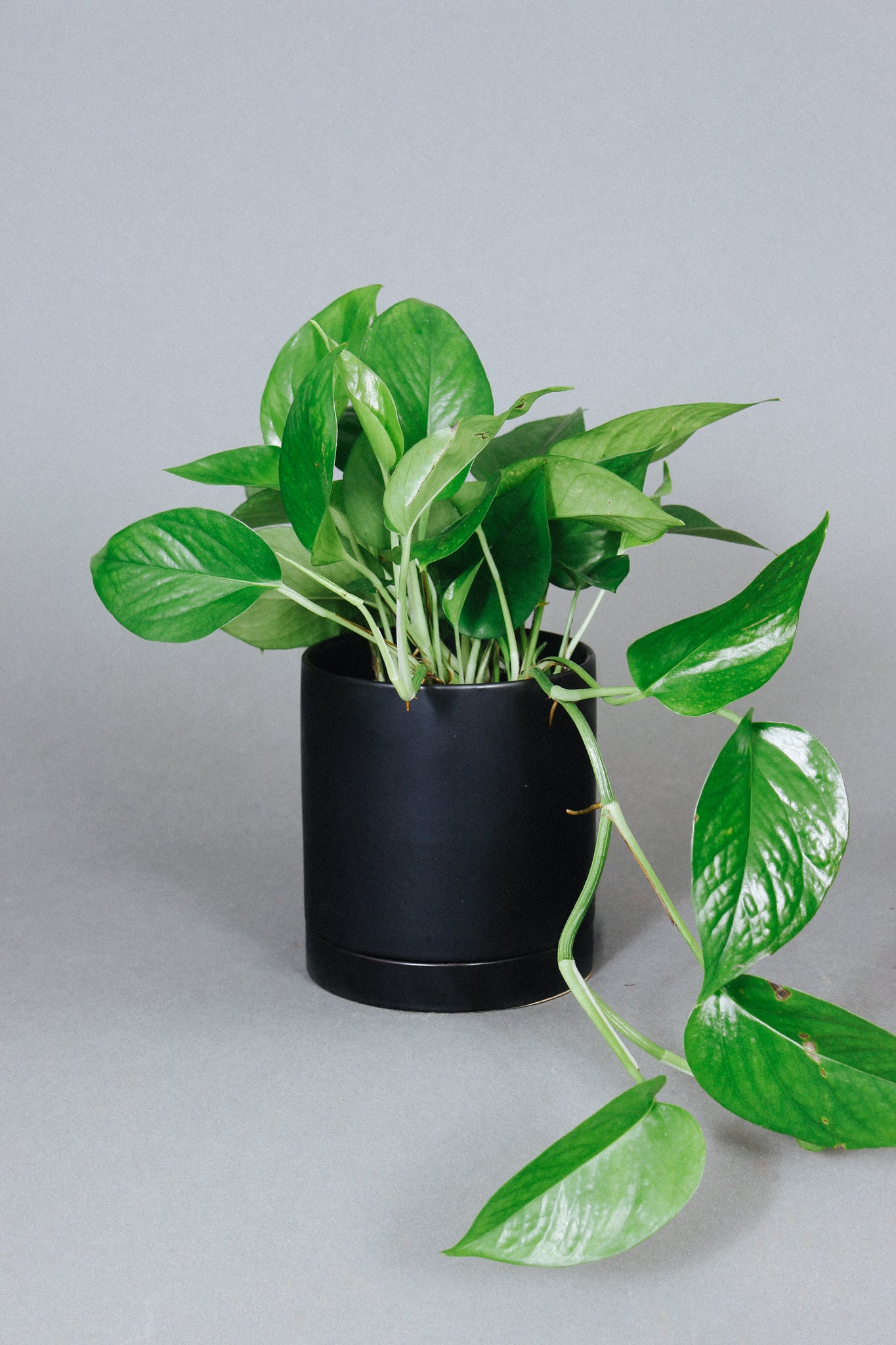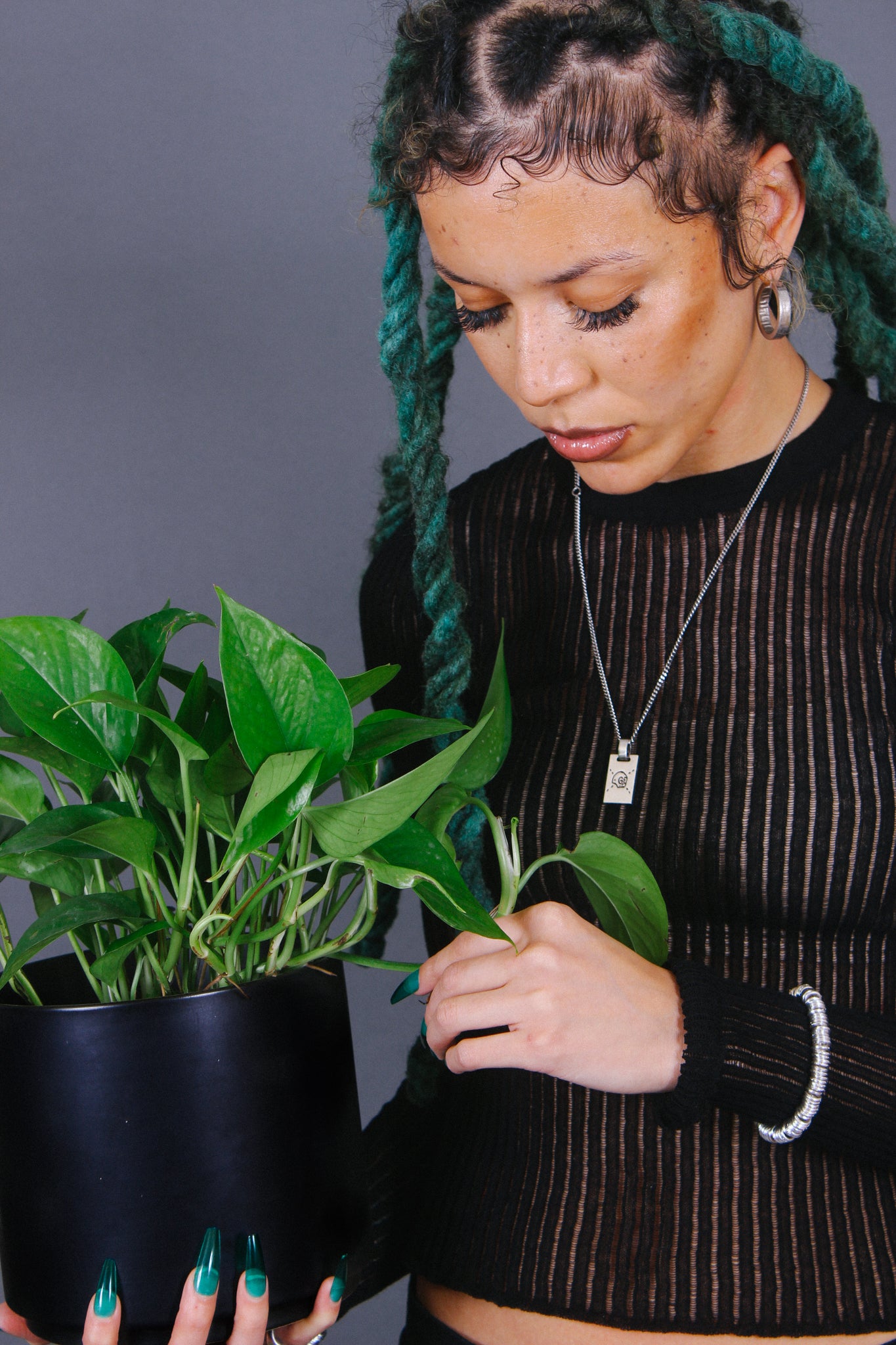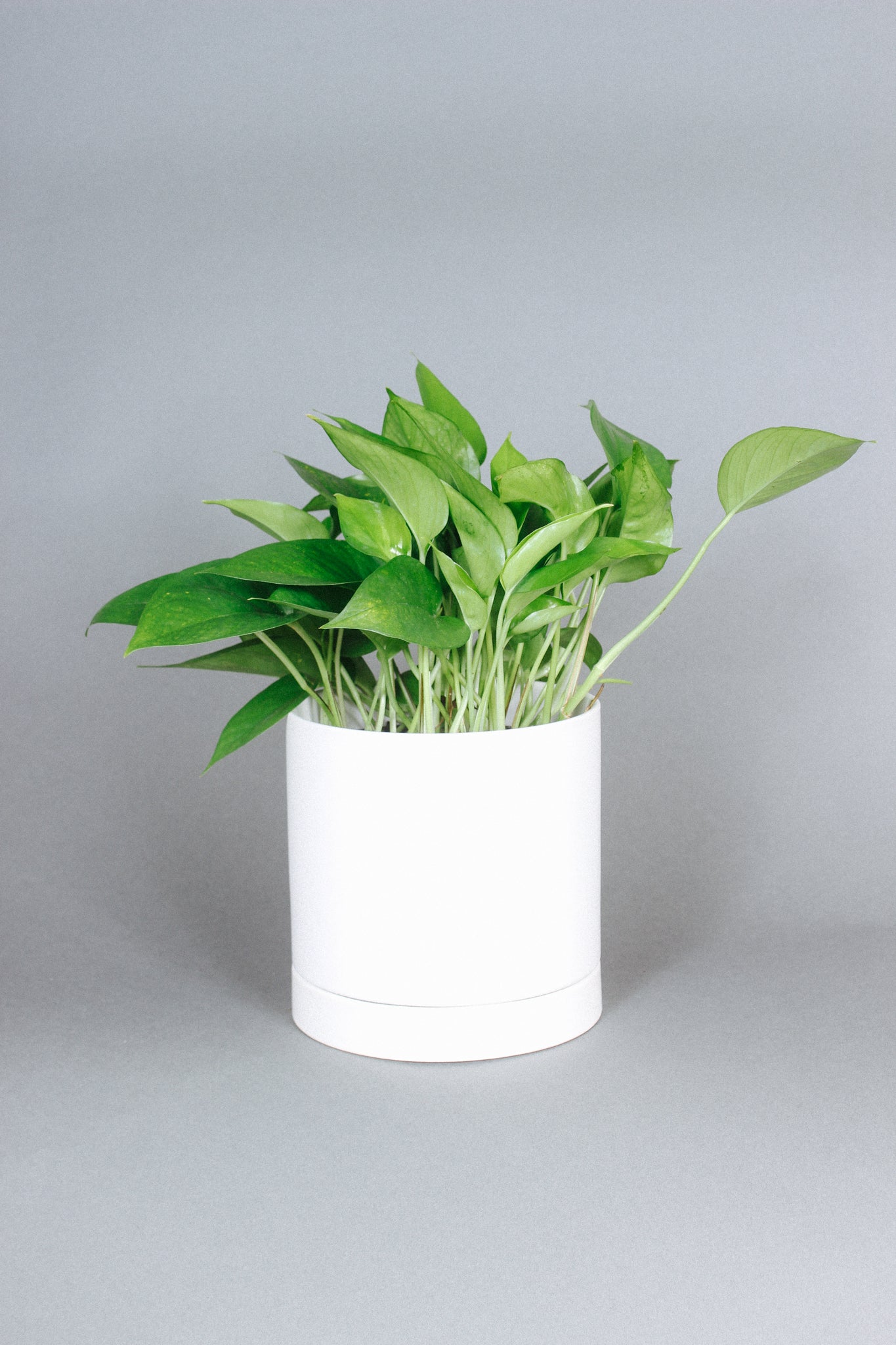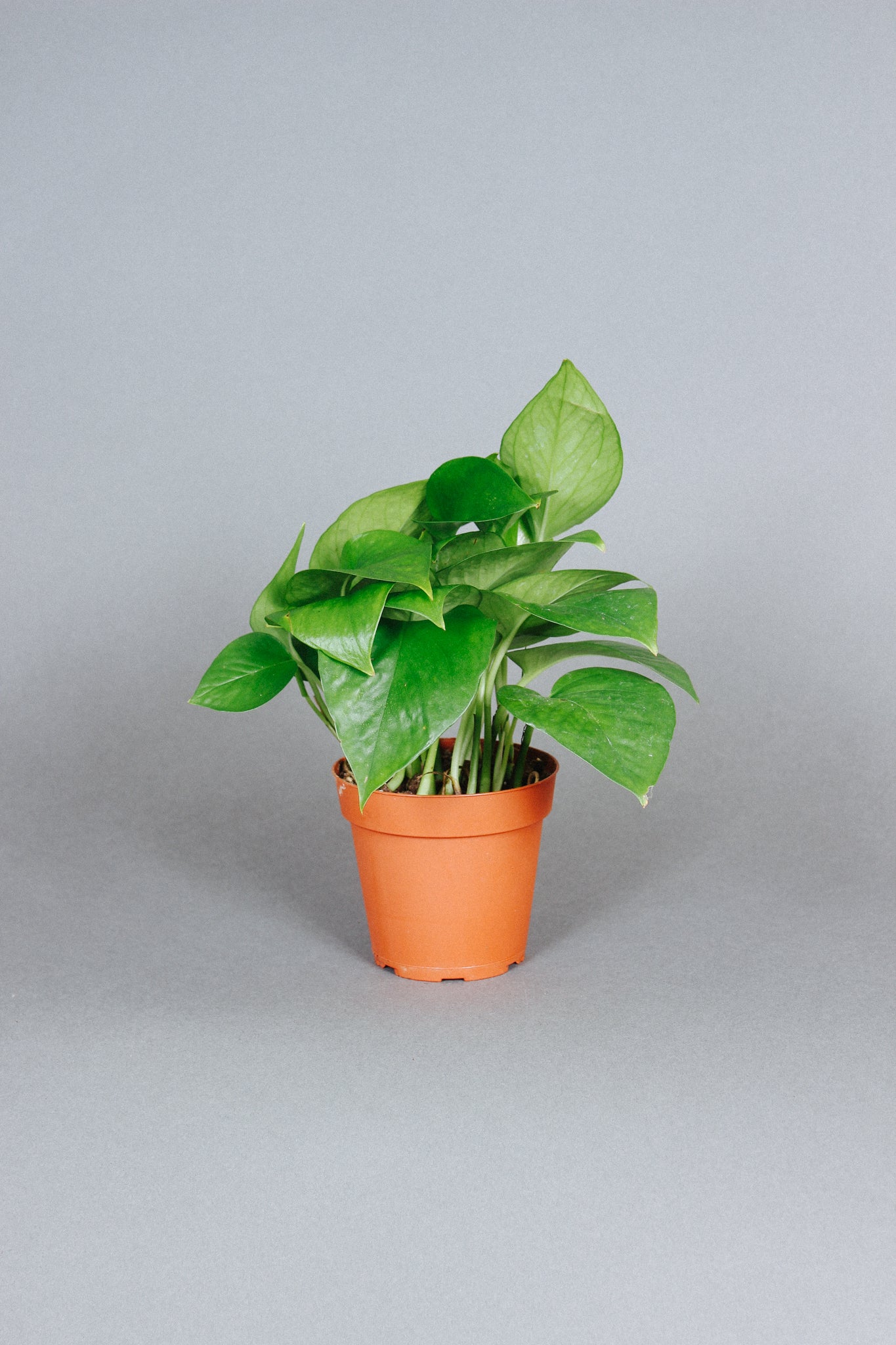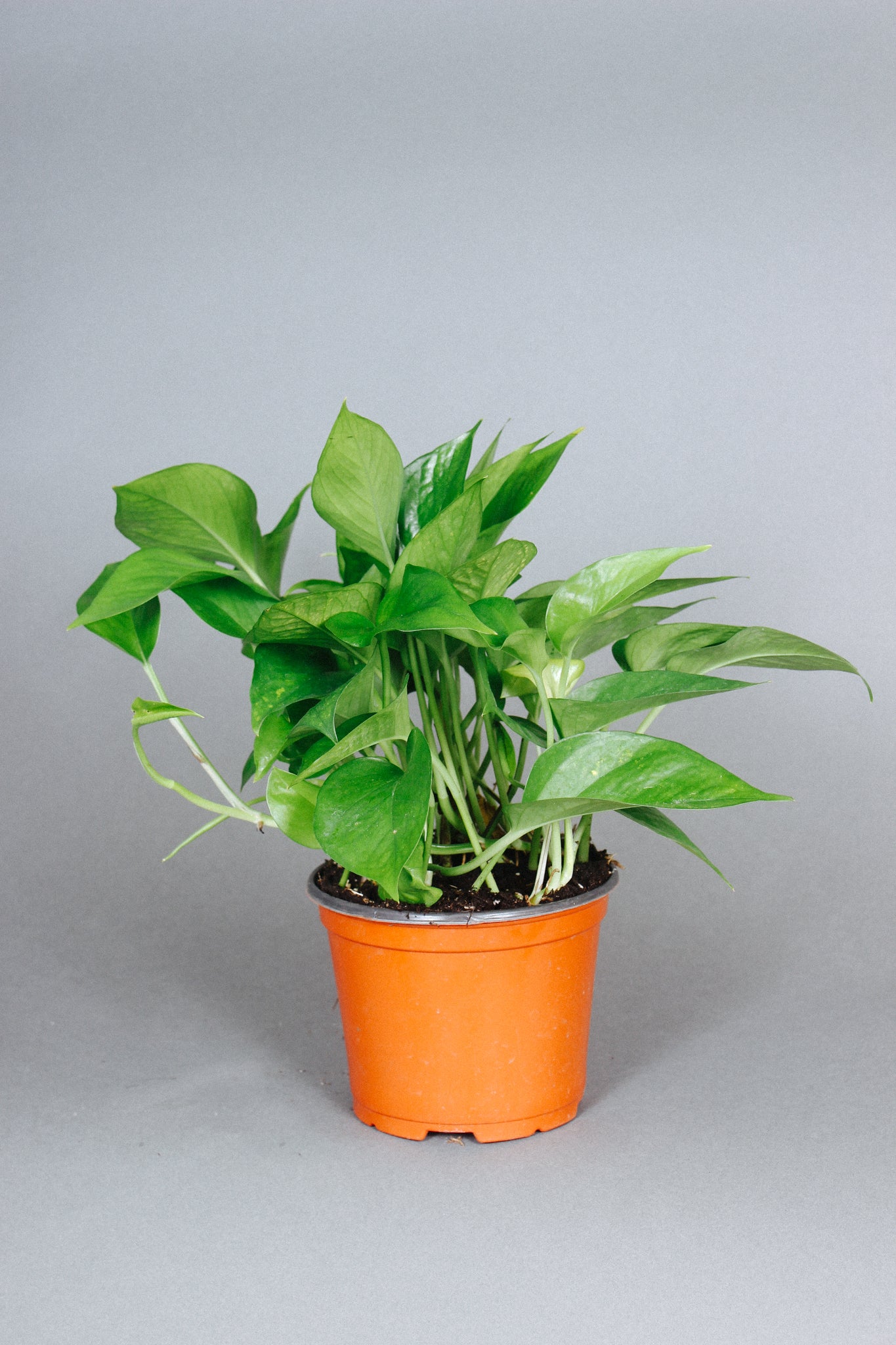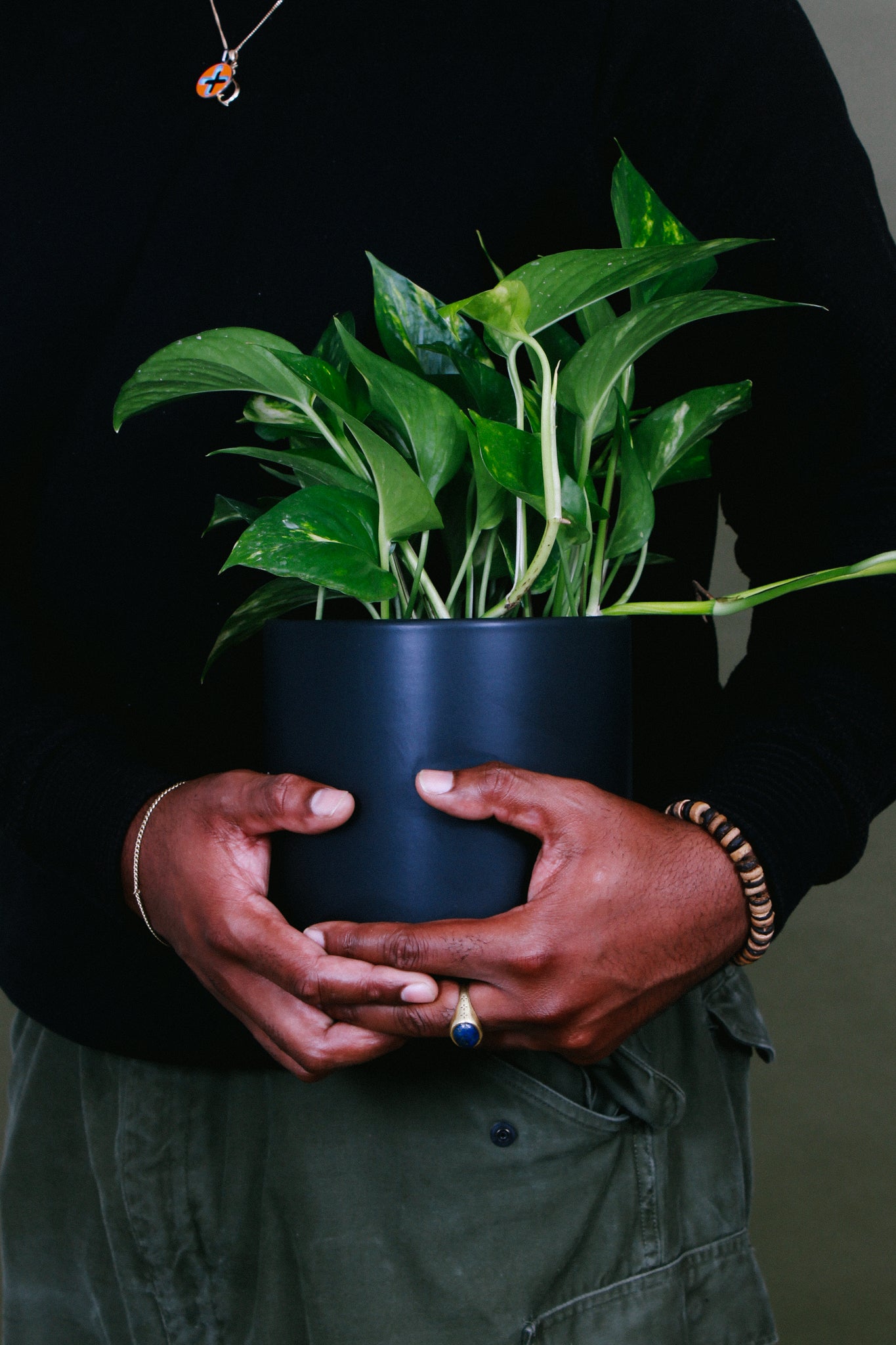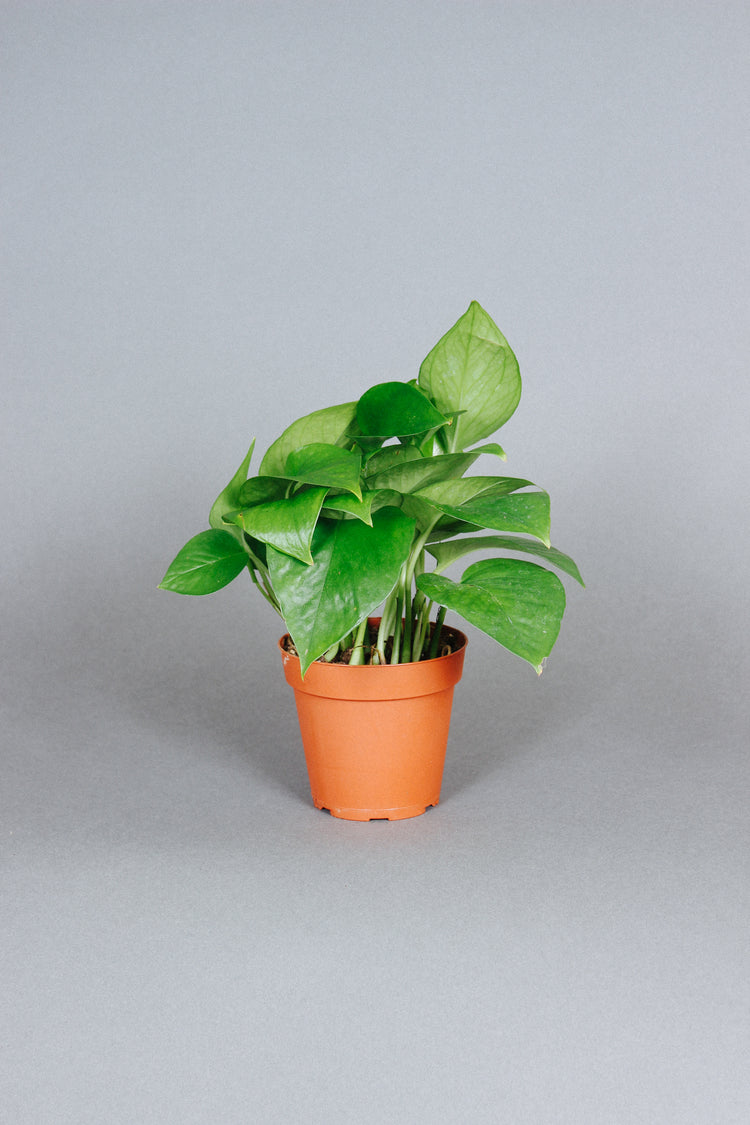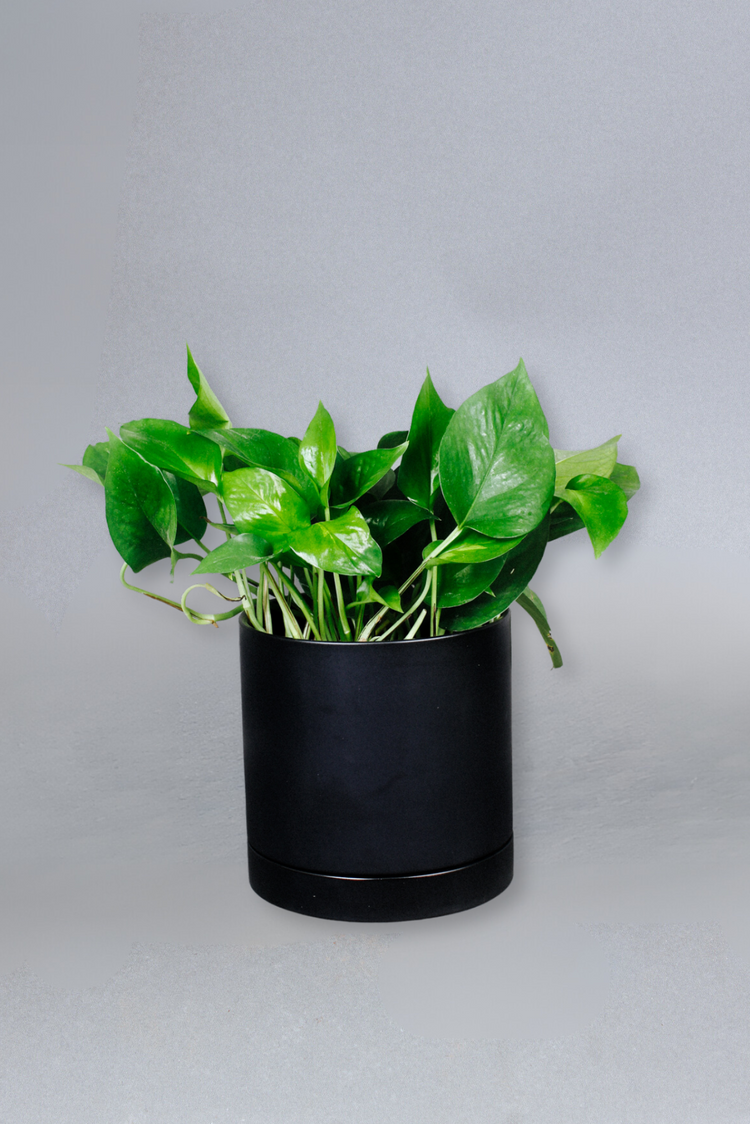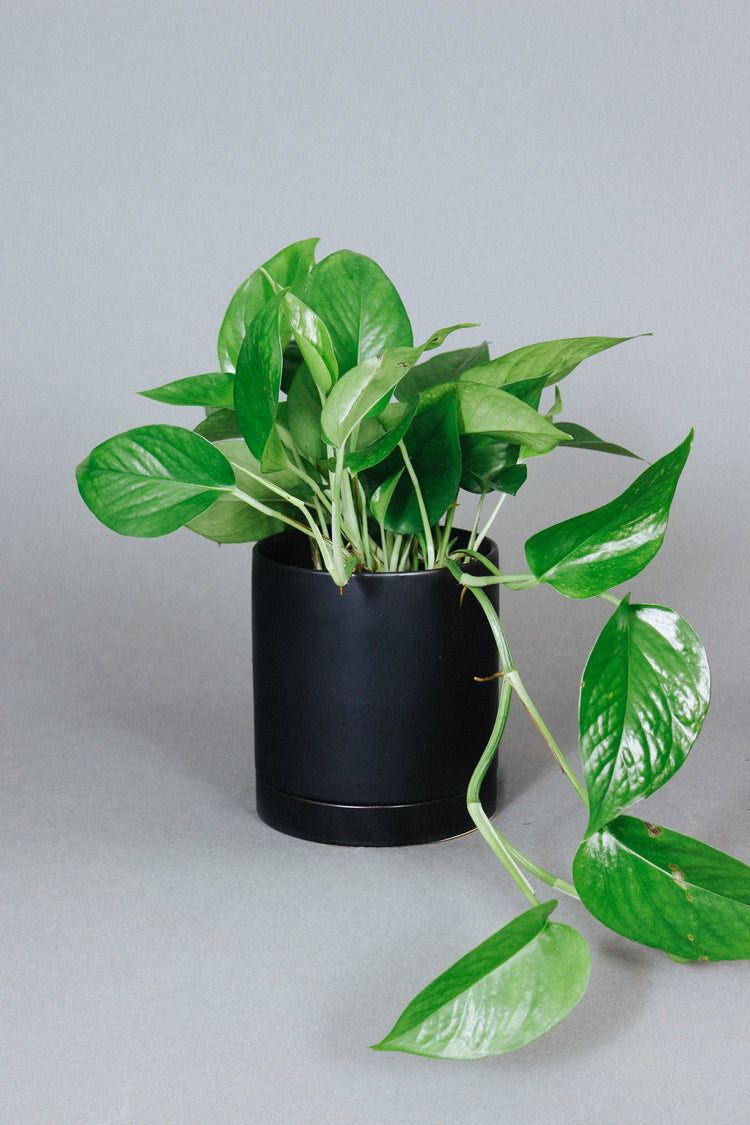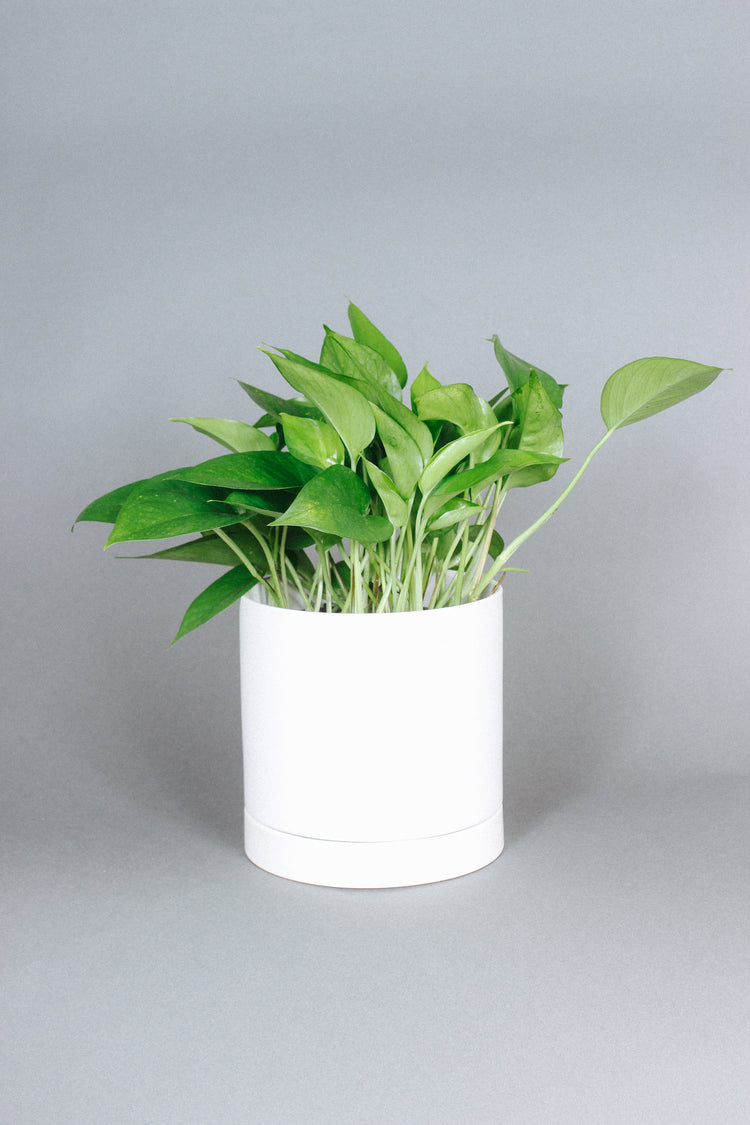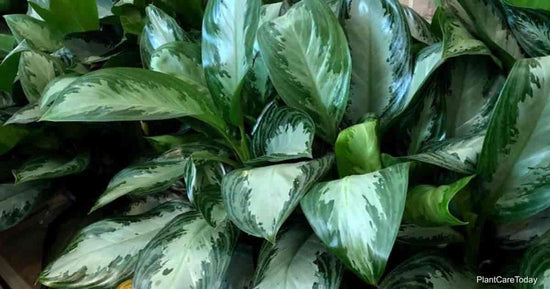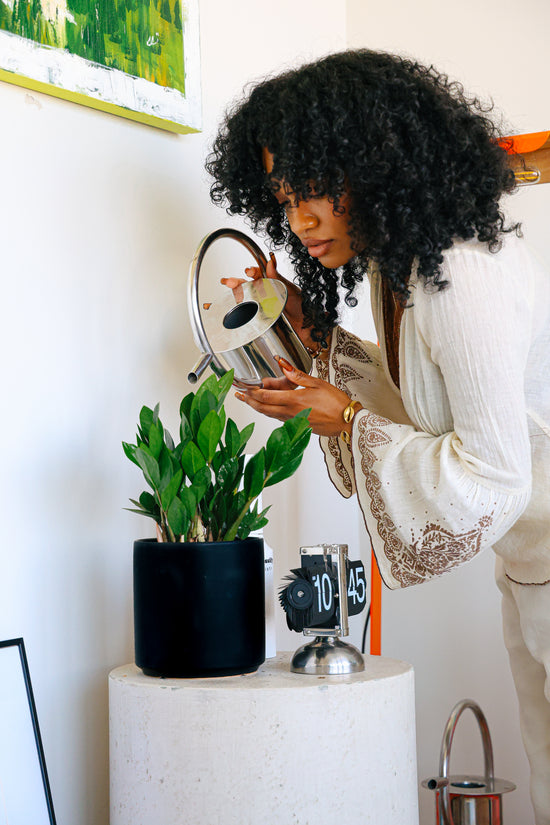The Peperomia Obtusifolia is a uniquely-shaped and compact plant suitable for many rooms. Known for its luck and symbolism of friendship, it’s worth learning to expertly care for! We’ve got you covered with our in-depth care guide.
Maintenance: Intermediate | Climate: Warm + Humid | Light: Bright + Indirect | Watering: Consistent | Pet Safe: Yes
CHARACTERISTICS
Peperomioides Obtusifolia is a subtropical plant that grows in warm, humid areas like Florida, Central, and South America. Its upright branches show off thick and petite, cup-like leaves. Depending on the conditions and growth, it can develop a bush appearance, up to 3 feet tall or they may trail under the weight of their foliage. Either way, their glossy, green hues are sure to draw appreciation.
LIGHT
Peperomioides Obtusifolia prefers medium to bright, indirect light. While it can tolerate dimmer conditions, it will show more growth in filtered light near an east or south-facing window. Peperomioides should never be placed in direct sunlight.
WATER
Allow the soil to dry 75% in between each watering. Water well once the top 3+ inches have dried. This succulent-like plant stores water in its leaves, which will begin to wrinkle once that storage has run low. Be sure to reduce frequency during the fall and winter.
AIR
Peperomias will be happiest in warm temperatures between 65º-80º and a high moisture content, similar to their natural subtropical climate. You can provide a regular boost of humidity by:
- Adding a humidifier nearby
- Creating a pebble tray that lives underneath the pot
- Misting the leaves 2-4x per week with non-tap water
PLACEMENT
The Peperomia is known to be a symbol of luck and a sign of friendship. With their saucer-shaped leaves, we can be encouraged to seek out “glass half-full” moments in our day. Harness their lucky energy by intentionally placing them in your space as a positive reminder and affirmation tool.
POTTING + SOIL
We recommend a clay or ceramic planter with a drainage hole to provide ideal moisture balance and airflow for the Peperomia. When repotting, use a planter of the same size or no more than 2 inches larger.
Ideal soil will include amendments that are both aerating and moisture-retaining. Mix additions such as bark, sand, and/or perlite to keep the soil light and the roots happy.
SEASONAL CARE
Since this plant is subtropical, it should be given extra humidity year-round. Outside of that, here are a few seasonal tips:
- Reduce watering frequency during fall and winter while the plant rests and the soil dries slower.
- Keep them away from air vents + cold and drafty windows.
- Fertilize with diluted or natural mixtures every month during spring and summer. Do not fertilize in the winter.
PRUNING & PROPAGATION
Pruning your Peperomia throughout the year can be beneficial to its growth and appearance. Pinching away old leaves at the start of spring and early fall will make room for new growth and create a full, bush-like appearance.
To propagate, choose a cutting with multiple healthy leaves and at least 3+ inches of stem that can be submerged into water. Using a clean knife or scissors, cut the stem at soil level, sprinkle with cinnamon to prevent infection, and keep it in a clean glass of water. Over the next few weeks or months, roots will grow and can be potted as a new plant.
COMMON ISSUES
If you feel concerned about changes on your Peperomia Obtusifolia plant, assess what it might using our care guide and the list below:
BROWN LEAVES
Peperomia leaves may change to brown for a number of reasons, including low lighting, burn from direct sunlight, low humidity, or stress from changes in the temperature. Any leaf changes are worth inspecting for pests, just in case.
YELLOW LEAVES
Yellow leaves are commonly from overwatering. They can also be a sign of low lighting, poor drainage, nutrient deficiency, or old leaves.
DROOPING LEAVES
If your Peperomia leaves are drooping, underwatering, cold, or stress are common causes. Leaves that repeatedly droop may be a sign of a larger problem, like root rot or a pest.
LEAF DROP
Leaf drop can be a result of overwatering your Peperomia. Severely thirsty or highly stressed plants will also show leaf loss
PRO TIPS
Peperomia Obtusifolias are pretty accommodating plants for an indoor space and will reward you with lush growth. Following our care guide will keep your Peperomia in superb health. Check out these other tips for extra TLC!
- These plants will appreciate deep watering on occasion, allowing all the water to flow out.
- To maintain their glossy shine, they should be gently dusted regularly.
- Always use non-tap, room temperature water to keep your Peperomia in good health.
Share the growth! Tag us at @groun.ded to show off your plants. 🌱


